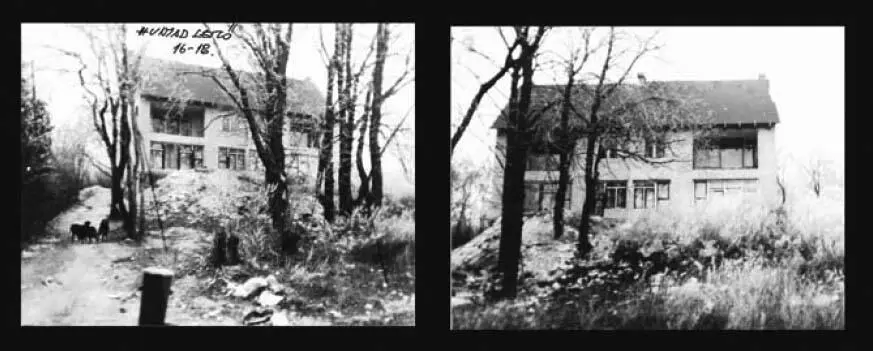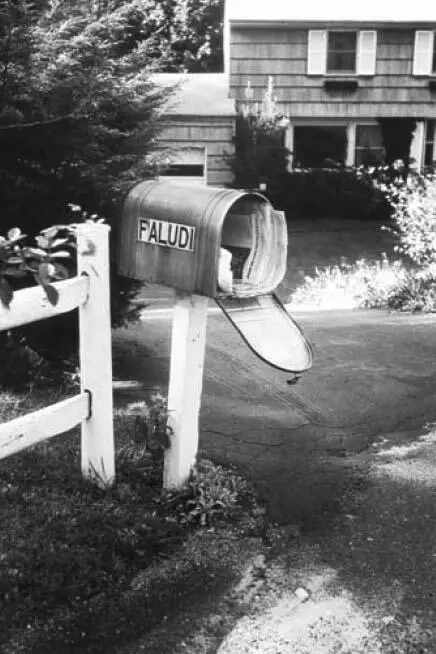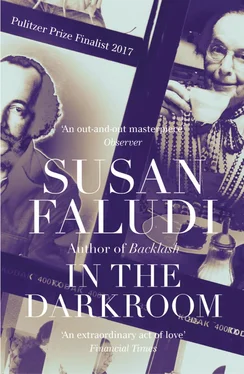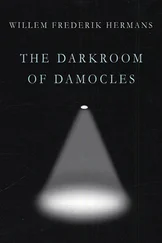1 ...8 9 10 12 13 14 ...22 
The house still needed significant maintenance, for which my father often enlisted Bader. “Now that I’m a lady, Bader fixes everything,” she said. “Men have to help me. I don’t lift a finger.” My father gave me a pointed look. “It’s one of the great advantages of being a woman,” she said. “You write about the disadvantages of being a woman, but I’ve only found advantages!” I wondered at the way my father’s new identity was in a dance with the old, her break from the past enlisted in an ongoing renegotiation with his history. She hadn’t regained the family property, but by her change in gender, she’d brought the Friedmans’ former gardener’s son back into service.
We went back inside, my father pulling the drapes shut again. She said she’d show me to my quarters. I followed her up the dark stairwell to the second floor, and into one of the three bedrooms.
“I sleep here sometimes, but I’m giving it to you because it’s got the view,” she said. She gestured toward the far wall of windows, which was shrouded in thick blackout liners covered by lace curtains. I inched the layers aside to see what lay behind them: closed casement windows that looked out over a concrete balcony, covered in dead leaves. A fraying hammock hung from rusted hooks. The walls were painted a pale pink and the room was blandly, impersonally furnished: a double bed in a white-painted wood frame, a white wooden wardrobe, a straight-back chair (an extra from the dining-room set downstairs), and an old television on a metal stand on wheels. A generic oil painting of a flower bouquet seemed to belong, like the rest of the decor, to a ’60s Howard Johnson’s.
“I had Ilonka sew this,” my father said, gesturing toward the matching fuschia duvet cover and pillowcases. “I built the bed frame. And the wardrobe.”
“You’re still doing carpentry?”
She said her workbench was in the basement. “Like in Yorktown.” She rapped her knuckles on the side of the wardrobe to demonstrate its solid craftsmanship. “You can hang your things in here,” she said.
I opened the wardrobe doors. My father followed my gaze into its shadowy innards and grimaced. Stuffed inside her hand-built armoire was a full armament of male clothing: three-piece business suits, double-breasted blazers, pin-striped shirts, khaki trousers, ski sweaters, rock-climbing knickers, plaid flannel jackets, hiking boots, oxfords, loafers, boat shoes, silk ties, wool socks, undershirts, BVDs, and the tuxedo my father wore to a family wedding.
“I need to get rid of all of this,” she said. “Someone will want these.”
“Who?”
“Talk to your husband.”
“He’s not my—” My boyfriend and I wouldn’t get married for a few more years. I could hear an old anxious hesitancy rising in my voice, which had suddenly lofted into helium registers. “He’s not your size,” I said, willing my voice to a lower pitch.
“These are quality clothes!” The hangers rattled as she slammed the closet door.
She left me to unpack. Ten minutes later, a summons from the adjoining bedroom. “Susaaan, come here!”
She was standing before a dressing table with a mirror framed in vanity lights. I recognized it: the makeup table for fashion models that used to sit in my father’s photo studio in Manhattan. She held an outfit in each hand, a yellow sundress with flounces and a navy-blue frock with a sailor-suit collar. “Which should I wear?”
I said I didn’t know. And thought, petulantly: change your clothes all you want, you’re still the same person.
“It’s hot out—I’ll wear the sundress.” She started peeling off her top. I backed toward the door.
“Where are you going?”
“To unpack.”
“Oh, come now,” she said, half in, half out of her blouse. “We’re all women here.”
She pulled the top over her head and gestured toward the closet. “Help me pick out the shoes to go with the dress.”
I stood in the threshold, one foot in, one foot out.
My father gave me a familiar half-grin. “Come closer, I won’t bite!”
5

The Person You Were Meant to Be
One evening in the early winter of 1976, an event occurred that would mark my childhood and forever after stand as a hinge moment in my life. The episode lay bare to my seventeen-year-old mind the threat undergirding the “traditional” arrangement of the sexes. Not just in principle and theory, but in brutal fact.
I was in my room, nodding over a book, when I was jolted awake by a loud crash. Someone was breaking into the house, and then pounding up the stairs with blood-curdling howls. It was my father, violating a restraining order. Six months earlier he had been barred from the premises. I heard wood splintering, a door giving way before a baseball bat. Then screams, a thudding noise. “Call the police,” my mother cried as she fled past my room. When I dialed 911, the dispatcher told me a squad car was on its way.
“Already?”
Yes, the dispatcher said. Some minutes earlier, an anonymous caller had reported “an intruder” at the same address.
The police arrived and an ambulance. The paramedics carried out on a stretcher the man my mother had recently begun seeing. He had been visiting that evening. His shirt was soaked in blood, and he had gone into shock. My father had attacked him with the baseball bat, then with the Swiss Army knife he always carried in his pocket. The stabbings, in the stomach, were multiple. It took the Peekskill Hospital’s ER doctors the better part of the night to stanch the bleeding. Getting the blood out of the house took longer. It was everywhere: on floors, walls, the landing, the stairs, the kitchen, the front hall. The living room looked like a scene out of Carrie , which, as it happened, had just come out that fall. When the house went on the market a year later, my mother and I were still trying to scrub stains from the carpet.
The night of his break-in, my father was treated for a superficial cut on the forehead and delivered to the county jail. He was released before morning. The next afternoon, he rang the bell of our next-door neighbor, wearing a slightly soiled head bandage, trussed up, as my mother put it later, “like the Spirit of ’76.” He was intent on purveying his side of the story: he’d entered the house to “save” his family from a trespasser. My father’s side prevailed, at least in the public forum. Two local newspapers (including one that my mother had begun writing for) ran items characterizing the night’s drama as a husband’s attempt to expel an intruder. The court reduced the charges to a misdemeanor and levied a small fine.

In the subsequent divorce trial, my father claimed to be the “wronged” husband. The judge acceded to my father’s request to pay no alimony and a mere $50 a week for the support of two children. My father also succeeded in having a paragraph inserted into the divorce decree that presented him as the injured party: by withdrawing her affections in the last months of their marriage, my mother had “endangered the defendant’s physical well being” and “caused the defendant to receive medical treatment and become ill.”
“ I have had enough of impersonating a macho aggressive man that I have never been inside ,” my father had written me. As I confronted, nearly three decades and nine time zones away, my father’s new self, it was hard for me to purge that image of the violent man from her new persona. Was I supposed to believe the one had been erased by the other, as handily as the divorce decree recast my father as the “endangered” victim? Could a new identity not only redeem but expunge its predecessor?
Читать дальше















